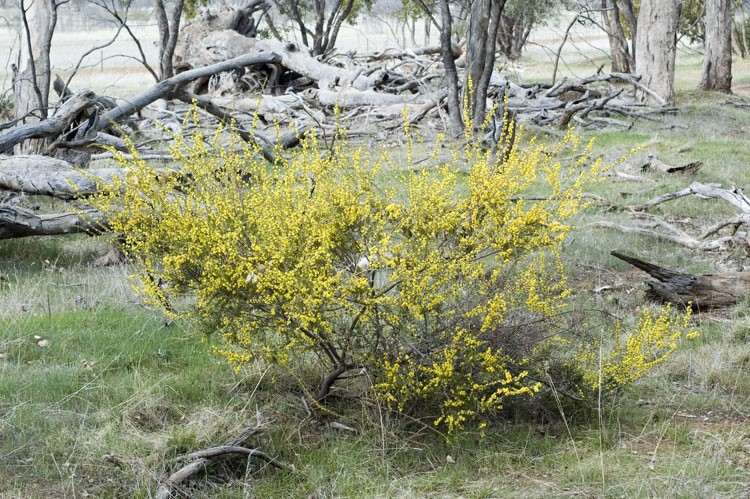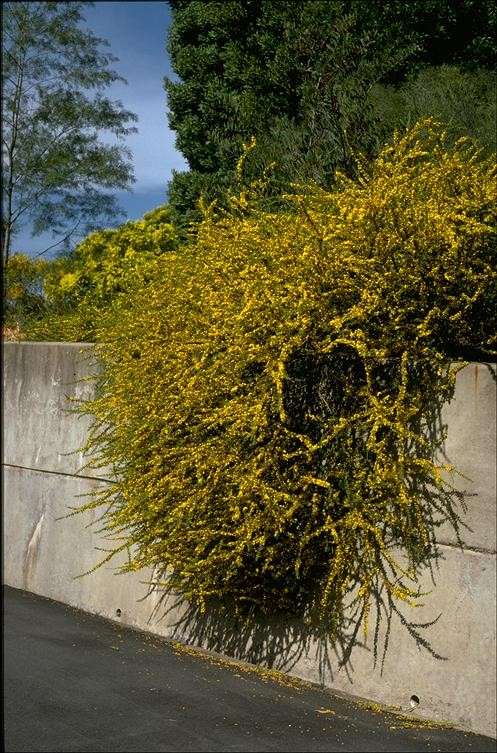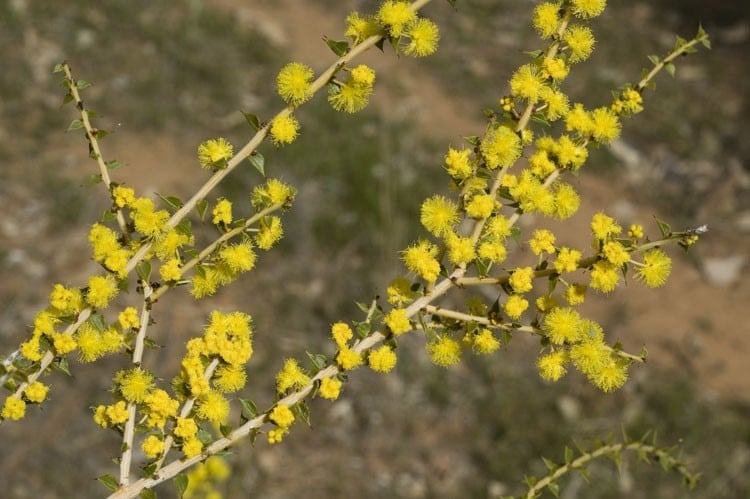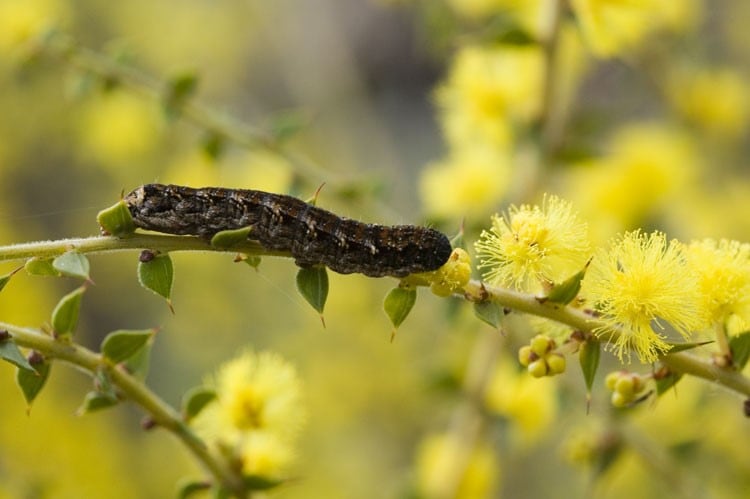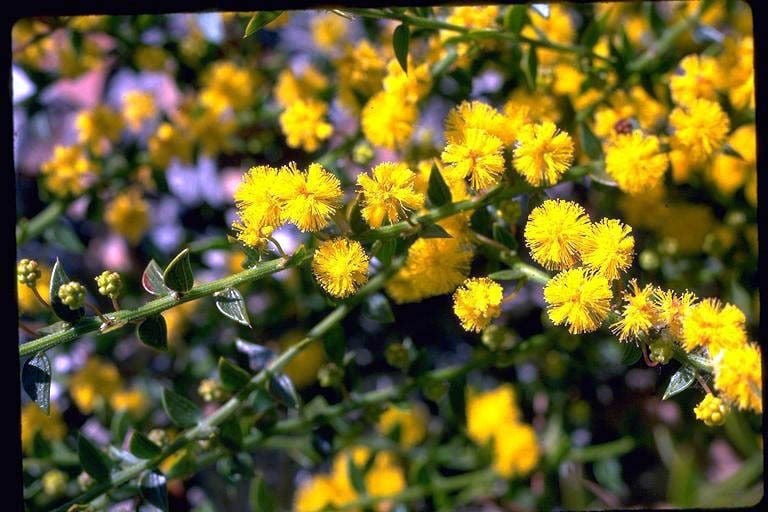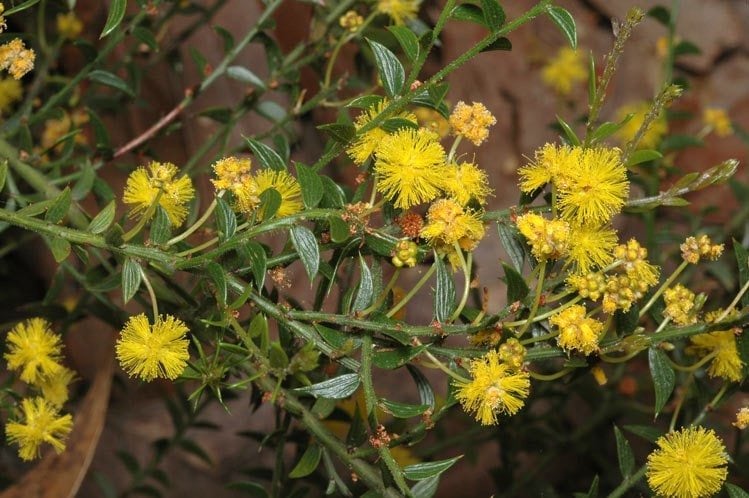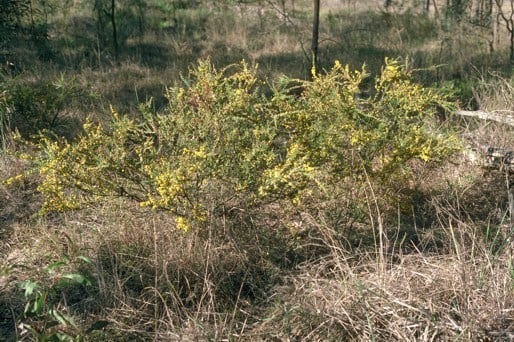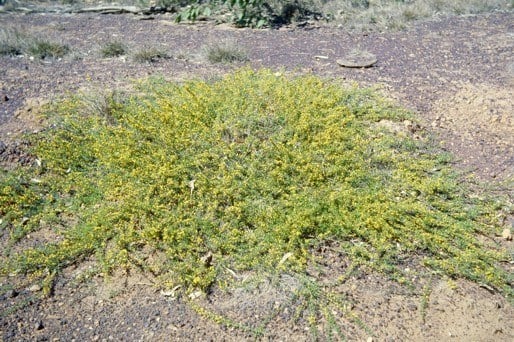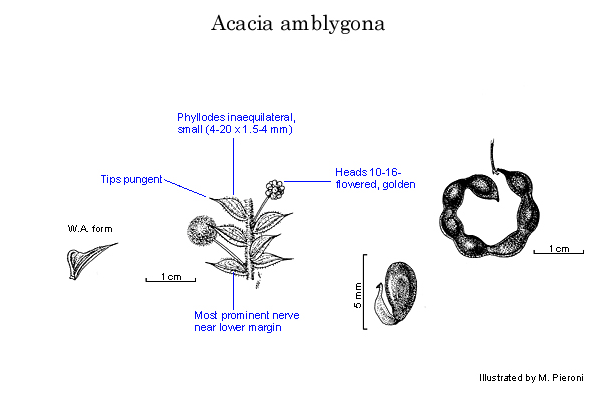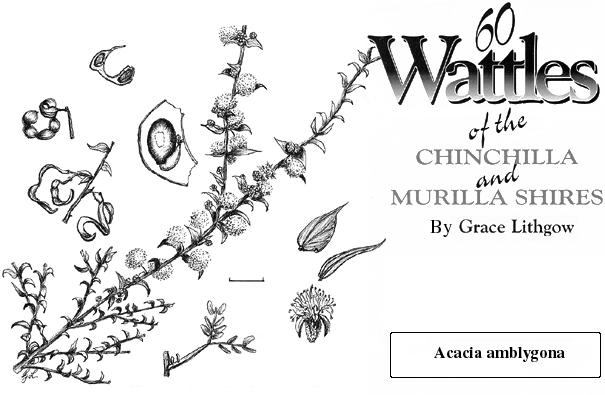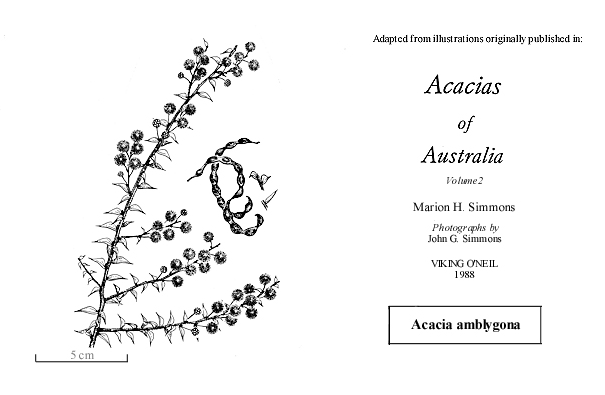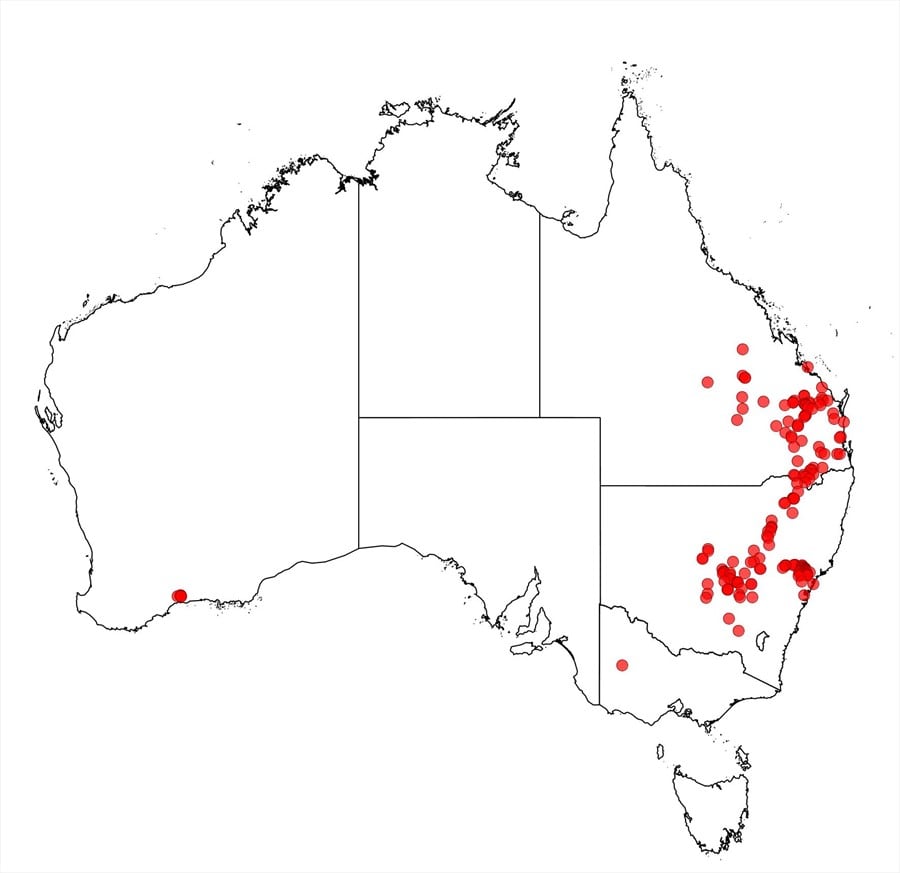Acacia amblygona A.Cunn. ex Benth.
WATTLE
Acacias of Australia
Common Name
Fan Wattle
Family
Fabaceae
Distribution
Extends from Temora, N.S.W., N to the Expedition Ra. and Peak Downs, Qld, also occurring just S of Ravensthorpe, W.A.
Description
Sprawling shrub to c. 1 m high, sometimes prostrate. Branchlets sparsely to densely hirsutellous, sometimes glabrous. Stipules persistent or caducous. Phyllodes sessile, patent, inequilateral, normally lanceolate to lanceolate-elliptic and acuminate, 4–20 mm long,
1.5–4 mm wide, l:w usually 2–5, pungent, rigid, glabrous to hirsutellous, with midrib situated towards lower margin, with 1–3 normally sparingly branched minor nerves subparallel to midrib on its adaxial side; gland 0.5–1.5 mm above base. Inflorescences 1‑headed rudimentary racemes with axes c. 0.5 mm long; peduncles 5–13 mm long, glabrous; basal bracts persistent; heads globular to shortly obloid, 10–18-flowered, golden; bracteoles subsessile, concave, obtuse, brown. Flowers 5-merous; sepals 1/2–3/4-united. Pods strongly arcuate to openly coiled or twisted, to 7 cm long, 3–5 mm wide, firmly chartaceous to thinly coriaceous, glabrous. Seeds longitudinal, ±oblong, c. 3 mm long; aril c. 1/2 length of seed.
Habitat
Grows in Eucalyptus forest or mallee communities, in stony skeletal soils, in undulating ridge country or on the footslopes of mountain ranges.
Specimens
W.A.: 12 km SW of Ravensthorpe, K.Newbey 9460 (MELU, PERTH). Qld: 24 km N of Munduberra, I.B.Armitage 816 (BRI, NSW, PERTH); on Nathan Gorge road, 40 km from Cracow, P.I.Forster 7200 (BRI, MEL, PERTH). N.S.W.: Wallaby Scrub Rd, 3 km E of Singleton–Windsor road, B.R.Maslin 5932 (AD, MEXU, NSW, PERTH).
Notes
A member of the ‘A. pravifolia group’ and sometimes confused with A. pravifolia itself, which has frequently obtriangular to obdeltate, shorter phyllodes, slightly shorter peduncles and glabrous or hirsutellous to shortly pilose, tightly coiled and irregularly twisted pods; it also is characterised by a longer, frequently denser branchlet indumentum. Also closely related to A. lanceolata from W.A. Phyllodes sometimes superficially similar to A. hubbardiana.
The inflorescence characters and phyllode venation of the W.A. specimens suggest their inclusion in A. amblygona, but pods are required to confirm this determination. Their phyllode shape and prominently raised midrib which is close to the lower margin resembles some forms of A. gunnii which differs in having cream to pale yellow, 20–30-flowered heads (and straight pods enclosing mottled, exarillate seeds). A variant from Chinchilla, Qld, recognised by its sparsely hairy branchlets (hairs minute, c. 0.1 mm long) is noted by L.Pedley, Austrobaileya 1: 225 (1978). A registered prostrate cultivar called “Winter Gold” is recognized for this species, fide M.Hitchcock, Australian Plants 22: 324 (2004); these plants have phyllodes which are usually more elongate than normal (l:w to 14).
FOA Reference
Data derived from Flora of Australia Volumes 11A (2001), 11B (2001) and 12 (1998), products of ABRS, ©Commonwealth of Australia
Author
Minor edits by B.R.Maslin
B.R.Maslin
This identification key and fact sheets are available as a mobile application:
URL: https://apps.lucidcentral.org/wattle/
© Copyright 2018. All rights reserved.
